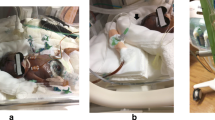Summary
The purpose of this study was to explore in patients with intraventricular haematomas the effectiveness and complication rate of a treatment protocol including standard ventriculostomy and application of urokinase via the catheter.
Our series includes 16 patients with severe CT-diagnosed intraparenchymal and predominantly intraventricular haemorrhages. In all cases, ventricular drainage was performed. Urokinase treatment was started immediately with intraventricular infusions of 10,000 U urokinase in 5 ml sterile physiological saline every 12 hours. Twelve patients had an excellent outcome, three good and one poor. There were no complications related to urokinase therapy. Side efects of the infusion volume were profuse sweating and headache which were present at 10 ml total infusion volume, but disappeared after reduction to 5 ml. A group of five patients with comparable lesions treated only with ventriculostomy served as controls. Two of them had a good outcome, two a poor one and one died. The late results in the urokinase-treated group were also favourable. Only one of the patients developed hydrocephalus and was shunted. In the control group, two patients required shunting for delayed hydrocephalus.
We conclude that this protocol for urokinase treatment is safe and effective and can be used in almost all patients with intracerebroventricular haemorrhage.
Similar content being viewed by others
References
Douglas MA, Haerer AF (1982) Long-term prognosis of hypertensive intracerebral haemorrhage. Stroke 13: 448–491
Fleischer AS, Huhn SL, Meislin H (1988) Post-traumatic acute obstructive hydrocephalus. Ann Emerg Med 17: 165–167
Graeb DA, Robertson WD, Lapointe JS, Nugent RA, Harrison PB (1982) Computed tomographic diagnosis of intraventricular haemorrhage. Radiology 143: 91–96
Hayashi M, Handa Y, Kobayashi H, Kawano H, Nozaki J, Hirose S (1988) Prognosis of intraventricular haemorrhage due to hypertensive haemorrhagic cerebrovascular disease. Zentralbl Neurochir 49: 101–108
Jayakumar PN, Taly AB, Bhavani UR, Arya BYT, Nagaraja D (1989) Prognosis in solitary intraventricular haemorrhage. Acta Neurol Scand 80: 1–5
Kim CH, Tanaka R, Kawakami K, Ito J (1981) Traumatic primary intraventricular haemorrhage. Surg Neurol 16: 415–417
Little JR, Blomquist GA, Ethier R (1977) Intraventricular haemorrhage in adults. Surg Neurol 8: 143–149
Matsumoto K, Hondo H (1984) CT-guided stereotactic evacuation of hypertensived intracerebral haematomas. J Neurosurg 61: 440–448
Nakajima S, Mizuno M, Sampei T, Suzuki A, Yasui N (1990) Intraventricular haematomas associated with hypertensive intracerebral haemorrhages: with special reference to third ventricular haematoma. No Shinkei Geka 18: 1107–1113
Narayan RK, Narayan TM, Katz DA, Kornblith PL, Murano G (1985) Lysis of intracranial haematomas with urokinase in a rabbit model. J Neurosurg 62: 580–586
Nath FP, Nicholls D, Fraser RJA (1983) Prognosis in intracerebral haemorrhage. Acta Neurochir (Wien) 67: 29–35
Ojemann RG, New PFJ (1963) Spontaneous resolution of an intraventricular haematoma. J Neurosurg 20: 899–902
Pia HW (1972) The surgical treatment of intracerebral and intraventricular haematomas. Acta Neurochir (Wien) 27: 149–164
Portenoy RK, Lipton RB, Berger AR, Lesser ML, Lantos G (1987) Intracerebral haemorrhage: a model for the prediction of outcome. J Neurol Neurosurg Psychiatry 50: 976–979
Ruscalleda J, Peiro A (1986) Prognostic factors in intraparenchymatous haematoma with ventricular haemorrhage. Neuroradiology 28: 34–37
Shen PH, Matsuoka Y, Kawajiri K, Kanai M, Hoda K, Yamamoto S, Nishimura S (1990) Treatment of intraventricular haemorrhage using urokinase. Neurol Med Chir (Tokyo) 30: 329–333
Stalhammar D, Starmark J-E, Holmgren E, Erkisson N, Nordström CH, Fedders O, Rosander B (1988) Assessment of responsiveness in acute cerebral disorders. A multicentre study on the Reaction Level Scale (RLS 85). Acta Neurochir (Wien) 90: 73–80
Toto T, Usui M, Takakura K (1991) Treatment of severe intraventricular haemorrhage by intraventricular infusion of urokinase. J Neurosurg 1991: 81–86
Yagüte L, Garcia-March G, Paniagua C, Sanchez-Ledesma MJ, Diaz P, Ludena D, Maillo A, Broseta J (1987) Stereotactic evacuation and local administration in intracerebral haematomas. A comparative study. Acta Neurochir (Wien) [Suppl] 39: 45–48
Author information
Authors and Affiliations
Rights and permissions
About this article
Cite this article
Rainov, N.G., Burkert, W.L. Urokinase infusion for severe intraventricular haemorrhage. Acta neurochir 134, 55–59 (1995). https://doi.org/10.1007/BF01428504
Issue Date:
DOI: https://doi.org/10.1007/BF01428504




